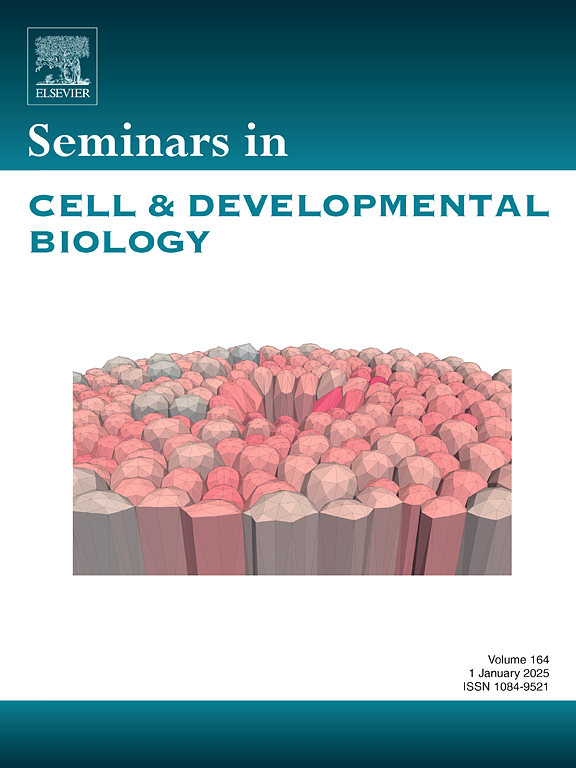衣单胞菌作为研究纤毛和真核鞭毛的模式系统。
IF 6
2区 生物学
Q1 CELL BIOLOGY
引用次数: 0
摘要
衣藻是一种单细胞的单倍体绿藻,是研究纤毛生物学的一个很好的模型系统。它具有两个相同长度的运动纤毛,使其成为研究纤毛发生和纤毛运动性以及纤毛信号传导的理想工具。该生物易于培养,纤毛分离简单,以及建立完善的实验系统可用于快速和同步的纤毛再生和拆卸,这有助于其在实验室研究中的应用。此外,衣藻高度适应各种遗传方法,提高了其作为模式生物的价值。由于控制纤毛结构和功能的核心机制高度保守,在衣单胞菌中的发现大大提高了我们对不同物种纤毛的理解,并为与纤毛相关的人类疾病提供了重要的见解。本文综述了衣藻作为一种模式生物的主要细胞特征、生命周期阶段、纤毛结构和动力学、纤毛行为、生化和遗传优势。我们的目标是为那些新的衣藻纤毛研究提供一个基础的观点-包括早期职业科学家,从其他领域过渡的经验丰富的研究人员,以及使用替代模型系统的纤毛专家。本文章由计算机程序翻译,如有差异,请以英文原文为准。
Chlamydomonas as a model system for the study of cilia and eukaryotic flagella
Chlamydomonas is a haploid, unicellular green alga that serves as an excellent model system for studying ciliary biology. It possesses two motile cilia of equal length, making it ideal for investigating both ciliogenesis and ciliary motility, as well as cilia-based signaling. The organism's ease of cultivation, the simplicity of cilia isolation, and the availability of well-established experimental systems for rapid and synchronous cilia regeneration and disassembly contribute to its utility in laboratory research. Furthermore, Chlamydomonas is highly amenable to a variety of genetic approaches, enhancing its value as a model organism. Due to the high degree of conservation in the core mechanisms governing ciliary structure and function, discoveries made in Chlamydomonas have significantly advanced our understanding of cilia across species and have provided important insights into cilia-related human disorders. In this overview, we summarize the key cellular features, life cycle stages, ciliary architecture and dynamics, ciliary behavior, biochemical and genetic advantages of Chlamydomonas as a model organism. Our goal is to provide a foundational perspective for those new to ciliary research in Chlamydomonas - including early-career scientists, experienced researchers transitioning from other fields, and cilia experts working with alternative model systems.
求助全文
通过发布文献求助,成功后即可免费获取论文全文。
去求助
来源期刊
CiteScore
15.10
自引率
1.40%
发文量
310
审稿时长
9.1 weeks
期刊介绍:
Seminars in Cell and Developmental Biology is a review journal dedicated to keeping scientists informed of developments in the field of molecular cell and developmental biology, on a topic by topic basis. Each issue is thematic in approach, devoted to an important topic of interest to cell and developmental biologists, focusing on the latest advances and their specific implications.
The aim of each issue is to provide a coordinated, readable, and lively review of a selected area, published rapidly to ensure currency.

 求助内容:
求助内容: 应助结果提醒方式:
应助结果提醒方式:


